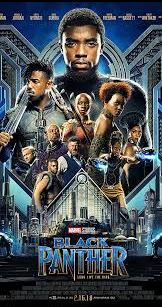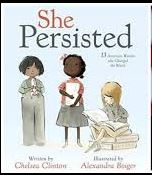By Victoria Mezera
Representation is often lacking in media, with television and movies not showing anything outside of what’s considered normal. However, in today’s day and age people are starting to realize that they can’t make every character a stereotypical, heterosexual, white football player, and that representation matters. Within the past couple of years, more characters are coming forth that are different. They have disabilities, they’re people of color, they’re gay, and they’re transgender. The most important thing however, is that they’re real people.
People in real life have disabilities, people are gay or bisexual, not everyone is white. It’s about time that people are realizing this. With so many people consuming media, it’s important for people, particularly children and teenagers, to be able to see themselves and be able to relate. It’s especially important to people who may not be accepted in their family or community to be able to recognize someone similar to them.

Representation in TV has increased rapidly within the past few years. On the show Orange Is The New Black, Laverne Cox is the first openly transgender person to be nominated for a Primetime Emmy Award. On the show Stranger Things, the character Dustin, is played by Gaten Matarazzo who has cleidocranial dysplasia which affects the growth of teeth and bones. On the show they incorporated this into his character, which is a big step for television. Disney Channel has also recently made history with their show Andi Mack, which is the first Disney show to include an openly gay main character, along with the main character, Andi, finding out that her big sister is actually her mother. The ABC show The Good Doctor portrays a surgeon who has both autism and savant syndrome in a positive lighting.
 Movies such as Black Panther, which is the first black superhero movie for the Marvel Cinematic Universe, are making history, with Black Panther also being the first black superhero ever. Along with the upcoming movie Love, Simon, which is a twist on the typical love story, as it is about the main character coming to terms with being gay. Another movie, Hidden Figures, showed the black female mathematicians who worked at NASA during the Space Race.
Movies such as Black Panther, which is the first black superhero movie for the Marvel Cinematic Universe, are making history, with Black Panther also being the first black superhero ever. Along with the upcoming movie Love, Simon, which is a twist on the typical love story, as it is about the main character coming to terms with being gay. Another movie, Hidden Figures, showed the black female mathematicians who worked at NASA during the Space Race.

Representation in advertising has also increased, with commercials such as the Campbell’s soup commercial, which showed a gay couple. Cheerios’ also made history in 2013, when they put out a Super Bowl commercial which showed an interracial couple. The U.K based brand Bodyform had a breakthrough when they became the first company to use red dye to represent period blood in a feminine hygiene product commercial. H&M released advertisements for the first time featuring a model wearing a hijab. The store American Eagle’s lingerie brand, Aerie, features untouched models, meaning they’re not photoshopped to look perfect, promoting body-positivity.
Book representation has also increased, with author Rick Riordan creating a variety of characters. In his books, there are mixed race kids, Native American kids, kids who are gay, transgender, depressed, or have learning disabilities such as ADHD. Author John Green has also recently put out a book, Turtles All The Way Down, which depicts the struggles of a person with anxiety. The book She Persisted, by Chelsea Clinton, depicts 13 women who made history and changed the world.
Overall, although representation in media has drastically increased, it still has a long way to go. With diversity still resulting in backlash from close-minded people, we still have a lot of work to do to make sure everyone can be represented. However, with enough positivity and persistence, I think one day we can finally get there.

